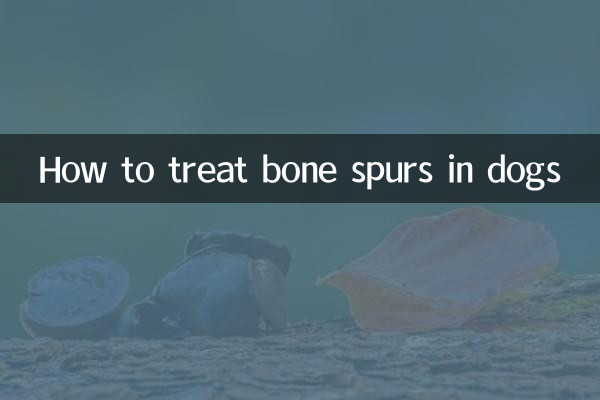How to treat bone spurs in dogs
Dog bone spurs (osteophytes or osteoarthritis) are a common joint disease in dogs, especially in older dogs or large dogs. In recent discussions about pet health across the Internet, the treatment and care of dog bone spurs has become one of the hot topics. The following is a detailed treatment method and precautions compiled based on the hot spots in the past 10 days.
1. Symptoms of bone spurs in dogs

When your dog suffers from bone spurs, he may have the following symptoms:
| Symptoms | Specific performance |
|---|---|
| Abnormal behavior | Lameness, difficulty jumping, slowness in getting up |
| joint pain | Ducking and whining when joints are touched |
| decreased activity | Refusal to go for a walk and less interested in playing |
2. Treatment methods for dog bone spurs
Based on veterinary advice and recent hot topics, treatment can be divided into the following methods:
| Treatment | Specific measures | Things to note |
|---|---|---|
| drug treatment | NSAIDs (such as carprofen), joint supplements (glucosamine) | Follow your doctor’s advice to avoid side effects of long-term use |
| physical therapy | Hot compress, laser therapy, hydrotherapy | Relieve pain and promote blood circulation |
| surgical treatment | In severe cases, osteophytes removal or joint replacement is required | Higher risk, suitable for young healthy dogs |
3. Daily care suggestions
Prevention and care are key to managing bone spurs in dogs, and points mentioned in recent popular discussions include:
| Nursing measures | Implementation method |
|---|---|
| weight control | Avoid obesity and increase joint burden |
| moderate exercise | Low-impact exercise such as short walks and swimming |
| diet modification | Supplements omega-3 fatty acids and antioxidants |
4. Summary of recent hot discussions
In the past 10 days, pet owners and veterinarians have focused on several issues on social media:
5. Summary
The treatment of bone spurs in dogs requires a combination of medication, nursing care, and lifestyle adjustments. Early intervention is more effective. It is recommended to take your dog for regular physical examinations and develop a personalized plan based on the guidance of your veterinarian. Recent hot topics also remind owners of the importance of natural therapies and long-term care.

check the details

check the details